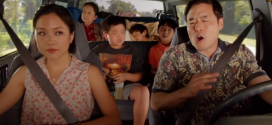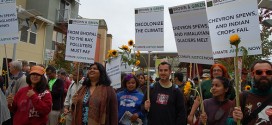By Michelle Phipps Evans
It was a warm Saturday on Aug. 24, 2013, the day that commemorated the 50th anniversary of the historic March on Washington for Jobs and Freedom. On Aug. 28, 1963, the vision of one man, Rev. Dr. Martin Luther King Jr., was delivered so eloquently that his speech ranks among the most memorable in history.
King’s 1960s vision for freedom for the District of Columbia, coupled with the contemporary fact that the city still doesn’t have equal representation in Congress, led D.C. Mayor Vincent C. Gray and other city officials to host their own rally for statehood in the early morning light of Aug. 24.
Lanfu Wei wanted to be part of the movement that seeks to have the city renamed New Columbia and admitted as the 51st state.
“I represent the Asian community in the District of Columbia and I’m here because the D.C. government helps to take care of its seniors,” said Wei, a senior who migrated from China more than 20 years ago, through an interpreter. “I’m very appreciative of this, and I like to participate in all the activities D.C. does.”
Wei was a passenger in three busloads of seniors from the Wah Luck House in the Chinatown district in Northwest D.C., who joined hundreds of other city residents at the D.C. War Memorial on the Mall. Many held placards decrying “Taxation without Representation,” and others urged Congress to “Free DC.” Others clutched signs promoting gay rights, better education for District children and a host of other issues.
Although D.C. has an elected member of the U.S. House of Representatives, as a non-voting delegate, Eleanor Holmes Norton is allowed to vote only in committee but not on the floor of the house where legislative decisions are finalized. The city has no representation in the U.S. Senate.
Several D.C. protestors joined their like-minded organizations to march as a group, for instance, church groups, neighborhood associations, sororities and fraternities.
Gray, who was a college student during the 1963 march, said that Dr. King was a staunch advocate for home rule for the residents of the District, who then lacked, and who continue today, to lack voting representation in Congress.
“Dr. King will ask why we are not more angry. Why are you so complacent,” Gray said to an eclectic crowd. “We need to stand up for democracy and stamp out tyranny. Today we march; tomorrow we fight.”
Because the District’s Asian population is almost 4 percent of the more than 630,000 residents, according to U.S. Census figures, there didn’t seem to be a large contingency with a common cause, beyond the busloads of seniors brought there through the Mayor’s Office on Asian and Pacific Islander Affairs.
The chair of the D.C. Commission on Asian and Pacific Islander Affairs, said that statehood for the District is the big issue that brought him out to march, in addition to the historical significance of King’s legacy.
“I love D.C. and everything about it and this is such an historical opportunity for us to promote our plight to the rest of the country,” said Wylie Chen, 35, who lives in the Brookland neighborhood in Northeast D.C. “We’ve come a long way but we still have work to do to make Dr. Kings’ vision a reality.”
Several of the District’s politicians joined in the march including Council Chair Phil Mendelson; At Large Council members Vincent Orange, David Grosso and Anita Bonds; Ward 2 Council member Jack Evans, Ward 4 Council member Muriel Bowser, and Ward 8 Council member Marion Barry, who was in the District for the 1963 march as a member of the Student Nonviolent Coordinating Committee, a civil rights organization.
“Let’s do something radical,” said Barry. “Let’s not march on Washington, let’s march on the Congress.”
After the statehood rally concluded, participants walked toward the Lincoln Memorial to join thousands in the larger rally. It was hosted by the King children, the remaining four of the original six organizing associations and the last living organizer, Georgia Congressman John Lewis, and others such as the National Action Network, a civil rights advocacy group.
The day was marked by speeches by many civil rights leaders, members of Congress, families who were witnesses to different levels of injustice or racial prejudice, union leaders, education leaders, political leaders and countless others.
Later, demonstrators marched from the Lincoln Memorial to the Washington Monument, following the same path as 50 years ago. The difference was the stop at the Martin Luther King Memorial.
The 50th anniversary commemorative march was one of two marches in the District during a week of events from Aug. 21 to 28, to mark the occasion. On Aug. 28, the actual day of the March for Jobs and Justice, the second march occurred where President Barack Obama and former President Bill Clinton addressed the crowd.
Several tourists wandered upon the Aug. 24 event, and many weren’t aware of the significance of the occasion.
However, for Chinese exchange students Ben Huang and Henry Chou, both juniors at New York City’s Baruch College, the trip to the District was a planned one.
“The Martin Luther King Jr.’s ‘I had a dream’ speech is very famous,” said Huang, 21, who’s from the Sichuan province and who’ll be studying in the United States for the next two years. “Our teacher asked us to come here to the big event. I’ve never been here before. I’m excited.”
 Asian Fortune Your source for all things Asian American
Asian Fortune Your source for all things Asian American



